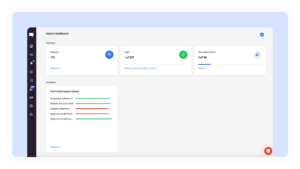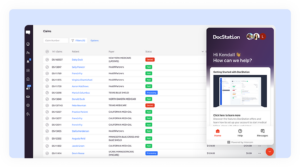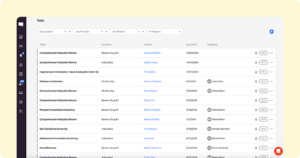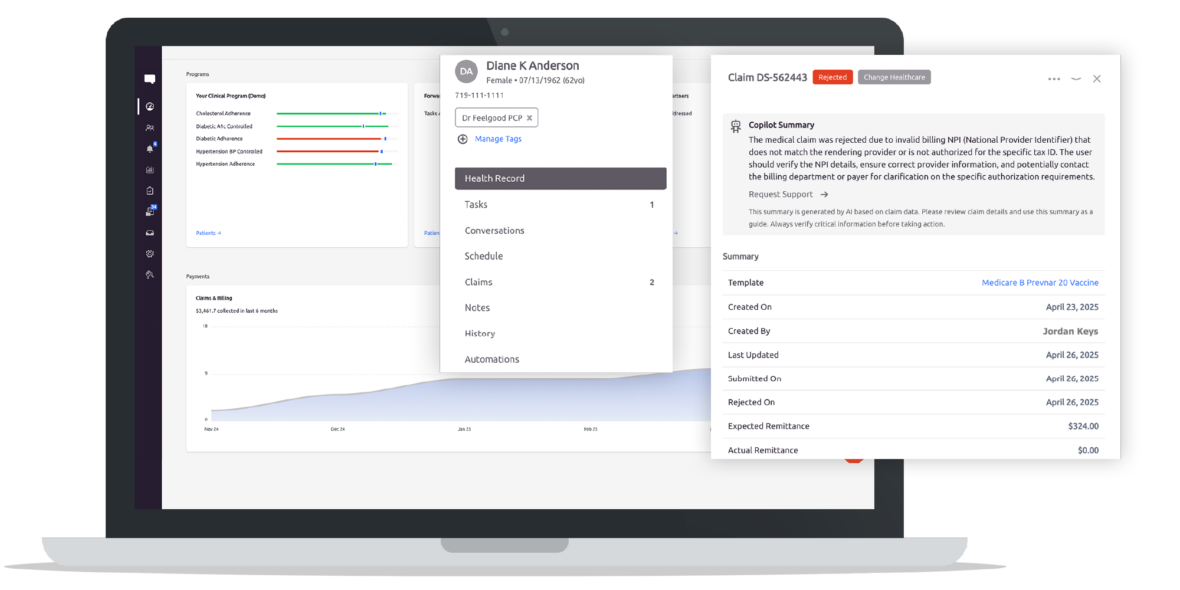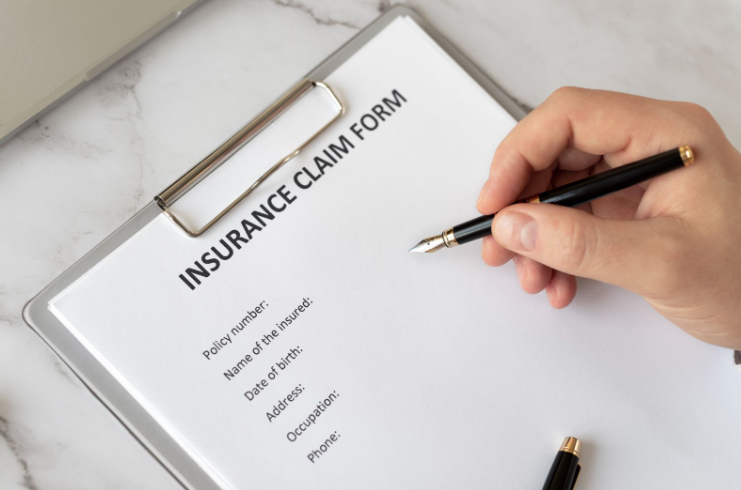Intro to Medical Benefit Billing for Pharmacist Providers and Clinic Pharmacies
By Rita Rox
After spending two decades knee-deep in healthcare revenue cycles (yes, I proudly call myself a revenue cycle nerd!), I’ve learned that the difference between a thriving pharmacy clinic and one struggling to keep its doors open often comes down to one thing: how well they manage their revenue cycle. Whether I’m taking a break from hiking with my family or stepping away from playtime with my five grandchildren, I’m often reflecting on how to make RCM more accessible to those just starting in this field.
A Note From Your Guide
Before we dive in, let me introduce myself. I’m Rita Rox, and I’ve spent over twenty years working every angle of the revenue cycle world – from medical billing and coding to denial management and everything in between. I’ve worked directly with insurance carriers and healthcare providers, optimizing revenue cycles and building successful teams from the ground up. I’ve been the team member, built the team, managed the team, and trained countless others to do the same.
What I’m about to share comes from real-world experience – not just textbook theory. These are the strategies and insights I’ve gathered from being in the trenches, making mistakes, and finding solutions that actually work.
What is RCM? Let Me Break It Down for You
When my oldest grandchild asked me what I do for a living, I explained it this way: “Imagine if you had a lemonade stand, but instead of just selling lemonade, you’re also checking if people are drinking enough water, teaching them about healthy beverages, and creating customized drink plans. Instead of getting paid right away, you have to send bills to different companies who all pay different prices for these services. Some might pay right away, some might pay less than they should, and some might not pay at all. My job is to make sure you get paid correctly for all the expert care and services you provide.”
That’s essentially what Revenue Cycle Management is in clinical pharmacy practice – it’s about billing for your clinical expertise, not just the products. It’s the entire process of making sure your pharmacy clinic gets properly reimbursed for the professional services you provide, from the moment a patient schedules an appointment until the final payment is collected for their comprehensive care.
The Reality Check: Why RCM Matters More Than Ever
Let me share a story from last summer. I was consulting with a small pharmacy clinic in Atlanta that was providing about 50 clinical encounters daily. Their team was working overtime, stress levels were through the roof, and despite all their hard work, they were barely breaking even. Sound familiar?
After spending a week observing their operations, I noticed they were losing money in places they didn’t even realize:
- 15% of their clinical claims were being rejected (industry standard is <5%)
- Prior authorizations for clinical services were taking an average of 5 days to process
- Staff was spending 2 hours daily on tasks that could be automated
- $45,000 in receivables was over 90 days old
The Building Blocks of Successful RCM
The revenue cycle in healthcare is like an assembly line, ensuring that providers receive proper reimbursement for services rendered. This cycle involves multiple interconnected steps, each crucial for minimizing errors, preventing denials, and maximizing revenue. Here’s a detailed breakdown of each step:
Front-End Excellence
Let me tell you about a clinical pharmacy practice I worked with in Texas. They were losing about $2,000 weekly because they weren’t properly handling patient eligibility and benefits verification for their clinical services. Here’s the system we put in place that cut those losses to zero within a month:
Patient Eligibility & Benefits Verification Protocol
- Scan both sides of medical insurance cards (not just pharmacy benefit cards)
- Verify medical benefit coverage before every patient encounter
- Check specific coverage for pharmacist provider services and CPT codes
- Document ALL insurance verification calls with time, date, and representative name
- Take screenshots of online eligibility verifications
- Create detailed patient profiles including secondary insurance and coordination of benefits
- Verify patient responsibility amounts (deductibles, co-insurance, out-of-pocket maximums)
Prior Authorization Management for Medical Services
- Start PA process immediately upon scheduling billable clinical services
- Use electronic medical authorization systems rather than pharmacy PAs
- Set up a tracking system specifically for medical service authorizations
- Follow up every 24-48 hours based on medical necessity
- Document all communications with referring providers
- Maintain a database of payer-specific requirements for pharmacist-provided services
Clean Claims Processing
You wouldn’t believe how many times I’ve seen pharmacy clinics lose money because of improper medical coding and claim errors. Here’s my foolproof method for clean medical claims:
Pre-Submission Checklist
- Correct patient demographics and insurance information
- Valid pharmacist NPI as the rendering provider
- Appropriate place of service code (e.g., POS 01 for telehealth, POS 11 for office)
- Accurate CPT/HCPCS codes for clinical pharmacy services
- Proper diagnosis codes (ICD-10) linked to support medical necessity
- Required modifiers attached (e.g., 95 for telehealth when applicable)
- Correct time-based coding for services like MTM or comprehensive medication reviews
- Documentation that supports the level of service billed
- Plan-specific requirements checked for pharmacist provider billing
I once worked with a clinical pharmacy that reduced their rejection rate from 18% to 3% just by implementing this medical billing checklist! They were able to successfully bill for services like comprehensive medication management (99483), vaccine administration (90471), and targeted medication problem assessment (99607) by ensuring their claims included all the required elements for medical benefit billing.
Payment Posting and Follow-up
This is where most pharmacy clinics leave money on the table. Here’s what I implemented at a Chicago pharmacy clinic that helped them recover $75,000 in lost revenue:
Daily Tasks
- Post all payments received for clinical services
- Reconcile bank deposits with expected reimbursements
- Review all claim rejections
- Work denials immediately with clinical documentation
- Document appeal submissions with supporting evidence
Weekly Tasks
- Audit unpaid claims by payer and service type
- Review aging reports for clinical services
- Check timely filing deadlines for medical claims
- Analyze rejection patterns by CPT code and diagnosis
- Submit appeals with additional clinical documentation
Provider Credentialing and Enrollment: The Foundation of Medical Billing
One of the most critical steps that pharmacy clinics often overlook is proper provider credentialing and enrollment.
Here’s what you need to know:
The Credentialing Process
- Each pharmacist providing billable services needs their own NPI (National Provider Identifier)
- Pharmacists must be credentialed with each payer as providers, not just as pharmacies
- The process typically takes 60-120 days, so start early
- Maintain a credentialing calendar to track renewal deadlines
- Keep a credentialing file for each pharmacist with copies of:
- State licenses
- Board certifications
- Liability insurance
- DEA registration
- CV and education verification
Enrollment Strategies
- Research each payer’s requirements for pharmacist providers
- Some payers may require collaborative practice agreements
- Identify which services are covered for pharmacist billing by payer
- Understand fee schedules for pharmacist services
- Document all provider enrollment information in a centralized system
I worked with a pharmacy that missed out on $30,000 in revenue because they didn’t realize their pharmacists needed to be individually credentialed with the payer. Don’t make this mistake!
Incident-To Billing for Pharmacist Services
In some cases, pharmacists may need to bill “incident-to” a physician’s services. Here’s what you need to understand:
Incident-To Requirements
- The supervising physician must initiate the patient’s care
- The physician must remain actively involved in the patient’s treatment
- The pharmacist must provide services under the physician’s direct supervision
- “Direct supervision” means the physician must be in the same building (not necessarily the same room)
- Services must be within the pharmacist’s scope of practice
- Documentation must reflect the physician’s ongoing involvement
Billing Process
- Claims use the physician’s NPI as the billing provider
- Documentation must support the incident-to relationship
- Some payers require specific modifiers to indicate incident-to services
- Maintain documentation of the supervising physician’s availability during the service
One pharmacy clinic I worked with increased their reimbursement by 35% once they properly structured their workflow to meet incident-to requirements.
Documenting and Billing for Cognitive Services
Cognitive services are the heart of clinical pharmacy practice, but they’re often the most challenging to document and bill correctly:
Documentation Best Practices
- Use a SOAP note format (Subjective, Objective, Assessment, Plan)
- Document the time spent face-to-face with the patient
- Include start and stop times for time-based services
- Record the complexity of clinical decision-making
- Document patient-specific interventions (not just general education)
- Include the assessment of response to therapy – Note any collaboration with other providers
- Clearly state the care plan and follow-up schedule
Common Billable Cognitive Services
- Medication Therapy Management (CPT 99605-99607)
- Chronic Care Management (CPT 99490)
- Transitional Care Management (CPT 99495-99496)
- Annual Wellness Visits (G0438, G0439)
- Comprehensive Medication Reviews
- Disease-specific management (diabetes, hypertension, etc.)
A pharmacy clinic I worked with in Denver increased their revenue by $125,000 annually by implementing proper documentation templates for cognitive services.
Medical Necessity Documentation Requirements
Medical necessity is the foundation of all successful claims. Here’s how to ensure your documentation supports medical necessity:
Key Elements to Document
- Clear connection between diagnosis codes and clinical pharmacy services
- Evidence-based rationale for the service
- Documentation of specific medication-related problems
- Quantifiable patient outcomes and goals
- Clinical findings that support the need for pharmacist intervention
- Documentation of how the service will improve patient outcomes
- Previous interventions and their results
Common Documentation Pitfalls
- Using templated notes without patient-specific information
- Failing to link the service to a specific medical condition
- Insufficient detail about clinical decision-making
- Missing documentation of the time spent
- Lack of specific interventions and recommendations
One pharmacy I consulted with had a 45% denial rate for their clinical services. After implementing proper medical necessity documentation, their approval rate increased to 92%.
Clinical Pharmacy Billing Modifiers: The Secret Weapon
Modifiers can make or break your claims. Here are the key modifiers for pharmacy clinical services:
Essential Modifiers for Pharmacist Services
- Modifier 95: Synchronous telemedicine service
- Modifier FQ: Service provided by a pharmacist in a FQHC
- Modifier SA: Nurse practitioner rendering service in collaboration with a physician (used by some payers for pharmacists)
- Modifier CG: Policy criteria applied (often used for MTM services)
- Modifier 25: Significant, separately identifiable E/M service
- Modifier 59: Distinct procedural service
Modifier Usage Tips
- Always check payer-specific requirements for modifiers
- Document support for each modifier used
- Train staff on appropriate modifier usage
- Conduct regular audits to ensure proper modifier application
- Track denials by modifier to identify patterns
A simple modifier error cost one pharmacy clinic I worked with over $20,000 in denied claims. After implementing a modifier verification system, they recaptured 95% of those lost dollars.
Common Pitfalls I’ve Seen (And How to Avoid Them)
The “I’ll Deal With It Later” Trap
Just last year, I consulted for a pharmacy clinic that had a stack of clinical service rejections they were “dealing with later.” That stack represented $32,000 in unpaid claims, and half of them were beyond timely filing limits. Don’t let this be you!
The “It’s Always Worked This Way” Mindset
One of my clients insisted on using the same old process they’d used for 15 years. When we finally updated their workflow to align with medical billing requirements, their revenue increased by 23% in just three months.
The “Too Busy to Train” Excuse
I always say, “If you think training is expensive, try ignorance.” A pharmacy clinic in Miami learned this the hard way when untrained staff cost them $100,000 in denied claims for clinical services.
Technology: Your Medical Billing Best Friend
Let me share what I consider the essential tech stack for modern pharmacist providers billing through the medical benefit:
Electronic Medical Record (EMR) System
Choose one with strong clinical documentation and billing capabilities for pharmacist providers. I’ve had great success with systems that offer:
- Structured clinical documentation templates for pharmacist services
- Medical coding assistance with CPT/HCPCS and ICD-10 lookup
- E-prescribing and medication management tools
- Care plan documentation that meets medical necessity requirements
- Integration with clinical quality measures and reporting
- Patient engagement features for follow-up care
Medical Claims Processing Software
Look for features specifically designed for provider billing:
- CMS-1500 form generation for medical claims
- Real-time claim scrubbing against medical billing rules
- Medical necessity checking for diagnosis-to-procedure alignment
- Electronic remittance advice (ERA) processing
- Automated denials management for provider claims
- Integrated appeals management with medical documentation attachment capabilities
Analytics and Reporting Tools for Clinical Services
Must-have reports for pharmacist providers:
- Provider productivity and billing metrics by CPT code
- Clinical outcome measures linked to billable services
- Documentation compliance for medical necessity requirements
- Payer mix analysis for medical vs. pharmacy benefit
- Reimbursement analysis by service type
- Days in A/R specifically for clinical services
- Denial trending by payer and reason code
Choosing the right EMR system for your pharmacist clinical services is crucial – it needs to support the full spectrum of clinical documentation while also facilitating proper medical benefit billing. Remember, pharmacy management systems are designed primarily for product dispensing, while your pharmacist providers need robust clinical documentation capabilities to support their provider status and medical claims.
Measuring Success: KPIs That Matter
Throughout my career, I’ve identified these key performance indicators as crucial for pharmacy clinical service billing success:
Clean Claim Rate
- Target: >90%
- Track weekly by service type
- Monitor by insurance carrier
- Analyze patterns in rejections
- Separate tracking for product vs. clinical service claims
Days in Accounts Receivable
- Industry standard for clinical services: <30 days
- Break down by payer and service type
- Monitor aging buckets specifically for clinical services
- Set up alerts for claims >45 days
Prior Authorization Success Rate
- Target: >85%
- Track processing time for clinical service authorizations
- Monitor approval rates by service type
- Document denial reasons and appeal success rate
Collection Rate
- Target: >93% of collectable amounts for clinical services
- Track by payer type
- Monitor patient responsibility collections
- Analyze write-off reasons specific to clinical services
Clinical Documentation Completeness
- Target: 100% of encounters properly documented
- Audit random sample of clinical notes weekly
- Track documentation deficiencies by provider
- Measure correlation between documentation quality and claim approval
Encounter-to-Claim Time
- Target: <48 hours from service to claim submission
- Monitor bottlenecks in the documentation-to-billing process
- Track time from service completion to provider sign-off
- Measure impact of delay on reimbursement success
Provider Productivity
- Track billable hours vs. total hours
- Monitor RVUs (Relative Value Units) by pharmacist
- Compare revenue generated per clinical hour
- Analyze no-show and cancellation impact on productivity
Implementation Strategy: A 90-Day Plan
Here’s the exact plan I use when helping pharmacy clinics optimize their clinical service billing:
Days 1-30: Assessment and Basic Implementation
- Audit current clinical documentation processes
- Identify immediate revenue leaks in clinical service billing
- Train staff on medical benefit vs. pharmacy benefit billing
- Implement daily claim review procedures for clinical services
- Set up tracking systems for clinical encounters and claims
Days 31-60: Process Optimization
- Fine-tune documentation workflows
- Implement EMR solutions
- Create standard operating procedures for clinical billing
- Establish performance metrics for clinical services
- Begin regular team meetings focused on clinical revenue
Days 61-90: Advanced Implementation and Monitoring
- Deploy advanced analytics for clinical service performance
- Implement automated solutions for claim submission and tracking
- Establish ongoing training program for clinical documentation
- Create performance dashboards for clinical revenue
- Set up quarterly review processes for clinical service lines
A Final Word From This Revenue Cycle Nerd
When I’m not resolving denials or optimizing workflows, you’ll find me hiking with my family, dancing (yes, revenue cycle nerds can dance!), reading, or spending precious time with my five grandchildren. But even during these moments, my mind often wanders to ways we can make revenue cycle management more efficient and less stressful for pharmacy clinic teams.
Remember, mastering RCM for clinical pharmacy services is a journey, not a destination. The healthcare landscape is constantly evolving, and staying ahead requires continuous learning and adaptation. But with the right foundation and mindset, you can turn your pharmacy clinic’s revenue cycle from a source of stress into a well-oiled machine that supports your clinical mission.
Feel free to reach out if you need guidance on your clinical RCM journey. After all, us revenue cycle nerds need to stick together!
About the Author:
Rita Rox is a self-proclaimed revenue cycle nerd with over twenty years of experience in the healthcare revenue cycle world. Her expertise spans medical billing, medical coding, denial management, and everything in between. She has worked directly with insurance carriers and healthcare providers of all specialties to include; oncology, physical therapy, substance abuse, family medicine, dialysis, inpatient, outpatient, comprehensive outpatient rehabilitation and home health to optimize revenue cycle management throughout her career. Rita has been the team, built the team, managed the team & trained others to do the same. In her free time, she enjoys hiking with family, dancing, reading and last but not least hanging out with her five grandchildren.





